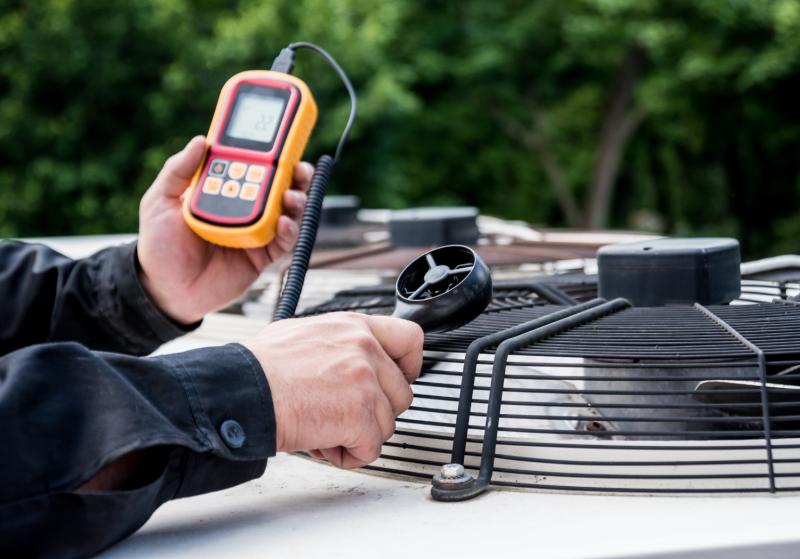Understanding the Importance of Air Quality Testing for a Healthier Environment

Air quality testing is essential for evaluating the air we breathe, both indoors and outdoors. It helps identify pollutants and harmful substances like gases, dust, and chemicals, ensuring that the air remains safe for us to breathe. This testing is crucial not just for maintaining a comfortable environment but also for protecting our health and the environment. Whether it’s for homes, offices, or industrial sites, understanding air quality and how to improve it plays a key role in creating healthy spaces.
What is Air Quality Testing?
Air quality testing measures and analyses the air to assess the levels of various pollutants. These pollutants include particulate matter, volatile organic compounds (VOCs), and gases that can affect our health. Indoor air quality testing is especially important since indoor air can often be more polluted than outdoor air. Poor ventilation, chemicals from cleaning products, and mold growth are some of the common causes of indoor air pollution.
Why is Air Quality Testing Important?
Good air quality is vital for our health. Breathing polluted air can lead to respiratory problems, allergies, and even more serious conditions like asthma. For businesses and workplaces, air quality testing ensures that the air remains safe for employees, reducing sick days and improving productivity. Additionally, by monitoring outdoor air quality, governments can take action to control emissions from industries and vehicles, helping protect ecosystems and public health.
How is Air Quality Tested?
Air quality testing begins with an initial assessment, where experts identify possible pollution sources and decide what pollutants to test for. This is followed by collecting air samples using specialised equipment. The samples are then analysed in a lab to measure the levels of harmful substances. Technologies like real-time air monitoring systems also provide continuous data on pollution levels, which can alert authorities when air quality deteriorates.
Types of Air Quality Tests
Indoor Air Quality Tests: These tests measure pollutants inside buildings, such as homes and offices. They check factors like humidity, VOC levels, carbon dioxide, and airborne particles to ensure the air is healthy.
Outdoor Air Quality Tests: Conducted in open spaces like parks or urban areas, these tests assess pollution sources like vehicle emissions and industrial activities. This helps environmental agencies manage air quality and reduce pollution.
Industrial Air Quality Tests: Factories and industrial zones can have high levels of pollutants. These tests measure harmful substances like VOCs and particulate matter to ensure worker safety and compliance with environmental regulations.
Equipment Used in Air Quality Testing
Air quality testing relies on different types of equipment to measure specific pollutants. For instance, particulate matter (PM) monitors detect tiny particles suspended in the air, while VOC monitors measure chemicals like paints or cleaning products. CO2 monitors track carbon dioxide levels to indicate ventilation problems. Additionally, gas analysers help detect harmful gases like carbon monoxide and nitrogen dioxide.
Choosing the Right Air Quality Testing Equipment
Selecting the right equipment depends on factors such as the specific pollutants being tested for and the environment where testing will take place. For example, indoor air quality tests may require more sensitive monitors, while outdoor testing requires equipment built to withstand weather conditions. Budget considerations and the level of accuracy required also play a role in equipment choice. Consulting with professionals can ensure the right tools are used for accurate and effective testing.
Air Quality Testing and HVAC Systems
For businesses looking to improve their indoor air quality, a properly designed and maintained HVAC system plays a critical role. Commercial air conditioning installation services can help ensure that air quality is kept in check while also providing heating and cooling repair services to maintain consistent comfort. In addition, integrating mechanical ventilation systems with your HVAC setup helps remove pollutants and manage airflow efficiently.
Regular air conditioning maintenance and air conditioning repairs are essential for keeping systems working effectively and preventing issues like poor air quality due to clogged filters or broken components. Commercial breakdown services can address unexpected issues, ensuring minimal disruption in maintaining optimal air quality and comfort.
Conclusion
Air quality testing is a vital service for anyone concerned with creating healthier indoor and outdoor environments. Whether you're installing a new air conditioning system for a commercial space, managing a factory's air quality, or simply ensuring the air at home is safe, understanding the process of air quality testing and the tools used can lead to significant health benefits. Regular testing and maintenance of HVAC systems, alongside a proactive approach to air quality, can keep spaces comfortable and safe for everyone.
Post Your Ad Here


Comments